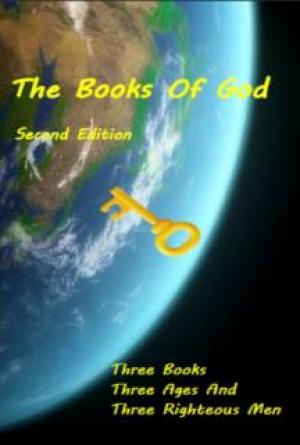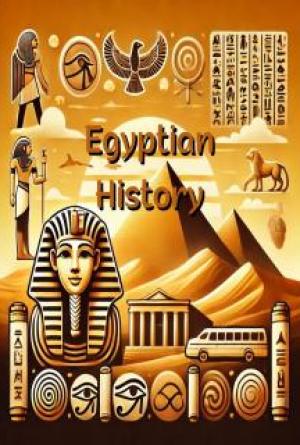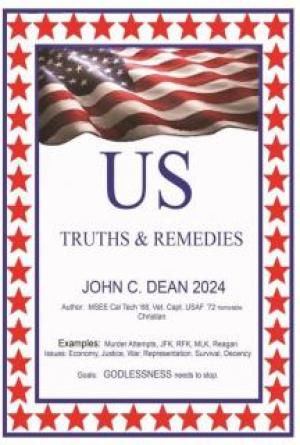Book written in Modern Israeli Hebrew
by Shai Agnon, 1966 Nobel Prize in Literature
Suggested Readings:
+ Hebrew Alphabet
+"Which Language Did Jesus Speak - Aramaic or Hebrew?" . By Brian Knowles
+ Understanding the Difficult Words of Jesus by David Biven and Roy Blizzard
+ The Hebrew language - Wikipedia
+ The Hebrew of Matthew
See below a Letter of Bar Kochba displayed in the Israel Museum, Jerusalem
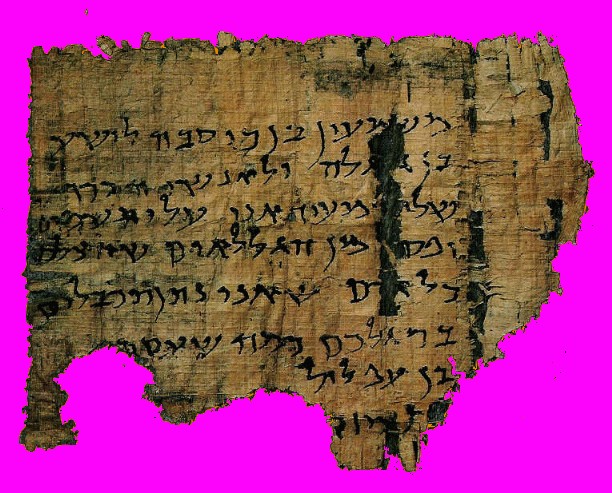
1
3
One Letter displayed in the Israel Museum, Jerusalem
Image: Israel Museum, Jerusalem
AHRC ID #:
24
Date of writing:
135 Christian Era
Place of Discovery: Murabb'at Wadi, near the Dead Sea, Israel Current Location:
Israel Museum, Jerusalem, Israel
Language:
Hebrew
Material:
Papyrus
Translation:
From Simon Ben Kosiba to Yeshua Ben Galgula
and to the fortress men, peace. I call heaven as a
witness against me that unless you destroy every
Galilean who are among you, every man, I will place shackles on your feet, as I did with Ben Aflul.
Comments:
This letter written in the 2nd century AD shows that
the Hebrew language was still commonly used for
this time. Simeon Ben Kosiba (Shimon Bar
Kochba) was the leader of the Second Jewish
revolt of 132-135 AD. In this letter appears the colloquial idiom "tashmiym" (last word, third line) instead of "et hashamayim".
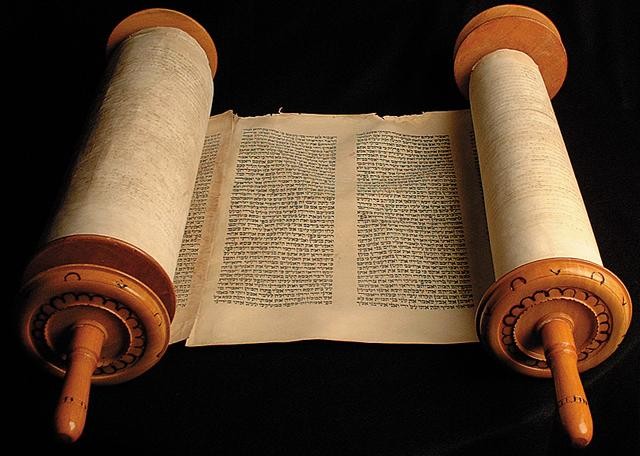
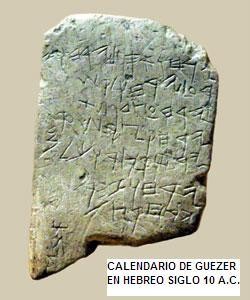
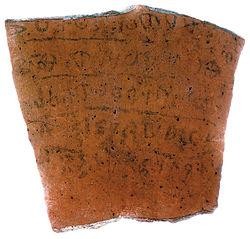
1
El Arameo y el Hebreo
LAS LENGUAS QUE SE HABLABAN EN LA JUDEA DEL SIGLO I
" SHEMA ISRAEL ADONAI ELOHEINU ADONAI EJAD", Deut 6,4
Por Camilo Ezagui Menashe, estudioso de las raíces judías del Cristianismo naciente y guía de peregrinos cristianos en la Galilea y Jerusalén desde 1981.
El Hebreo es una de las lenguas semitas noroccidentales que como el Fenicio, el Amoneo y el Moabita presentan marcadas influencias del Canaaneo. Sabemos que el Antiguo Testamento (la Torá o Pentateuco) de la Biblia fue escrito originalmente en hebreo.
La Torá o Pentateuco de la Biblia
En el libro II de Reyes, cap. 18, 26 y en el libro del Profeta Isaías cap. 36, 11 (siglo 8vo. A.C.) se menciona claramente la diferencia entre el arameo y la lengua que se hablaba en Judea durante la invasión de Sanaquerib cuando los consejeros del rey Ezequías en Jerusalén le dicen al emisario del rey de Asiria: "Por favor háblanos a nosotros tus siervos en arameo que lo entendemos, no nos hables en la lengua de Judea
para que no te oiga el pueblo que está sobre la muralla"...
Inscripción del siglo 10 A.C. Jirbet Keiyafa
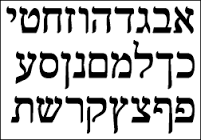
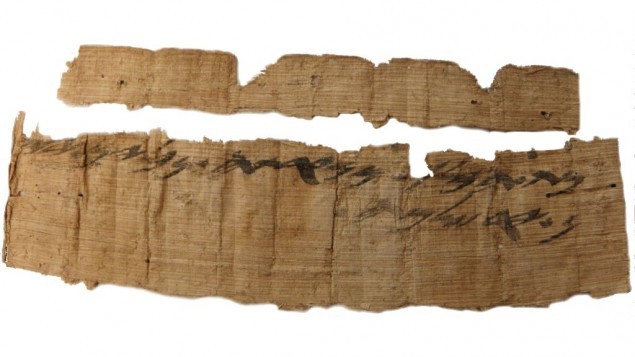
2
Al volver a Judea del exilio de Babilonia (siglo 6to. A.C.) se utilizaron los
"Targum" en arameo para enseñarle al pueblo la Torá. El alfabeto hebreo adoptó los caracteres cuadrados de la caligrafía Caldea. Quinientos años después las cosas habían cambiado y para el siglo I de la era cristiana se hablaba desde hacía mucho tiempo el hebreo.
Alfabeto hebreo de 22 consonantes
La Profesora Sara Lipkin, especialista en lengua hebrea, en su estudio:
"El hebreo, historia por capítulos" (1992) nos dice que "el hebreo arcaico de la Mikrá, que se hablaba en la época del Rey Salomón tal y como aparece en el Pentatéuco, las Crónicas y los Profetas, fue sustituido unos 300 años antes de Cristo por un hebreo hablado que utilizaba palabras, modismos, pronunciación y expresiones un tanto diferentes y que se conoce como "Lashón Jazal" o la Lengua de los Sabios. Este hebreo se habló en Judea hasta el año 200 después de Cristo". La profesora Sara Lipkin señala que durante ese período el arameo era una lengua internacional que se hablaba y se escribía desde la India y hasta Kush (Sudán). En esta época, concluye Sara Lipkin, los judíos hablaban 3 lenguas: el hebreo, el arameo y el griego. Había quien sabía hablar las tres y había quien solo hablaba una de éllas.
Papiro en hebreo arcaico del siglo 7mo. A.C.
Por su parte, el Profesor David Flusser de la Universidad Hebrea de Jerusalén concluye que: “Después del descubrimiento del Libro de Ben Sira en hebreo entre los Manuscritos del Mar Muerto y del hallazgo de las Cartas de Bar Kojbá y a la luz de estudios más profundos del lenguaje de los sabios judíos, se acepta que la mayor parte del pueblo hablaba bien el hebreo". El Profesor M.H. Segal, una autoridad en hebreo Mishnaico, opina lo mismo.
Es preciso señalar que entre los Manuscritos del Mar Muerto todos los textos de inspiración propia tales como himnos, comentarios sobre las Escrituras, correspondencia, la regla de la comunidad, la profecía
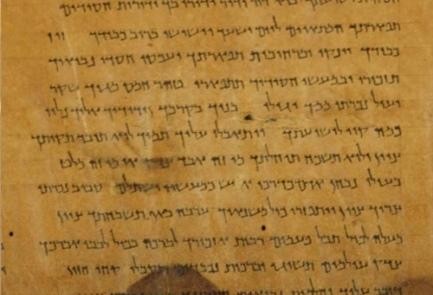
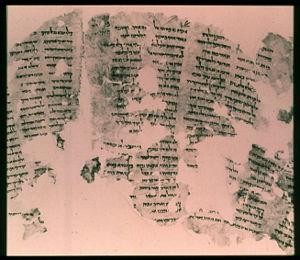
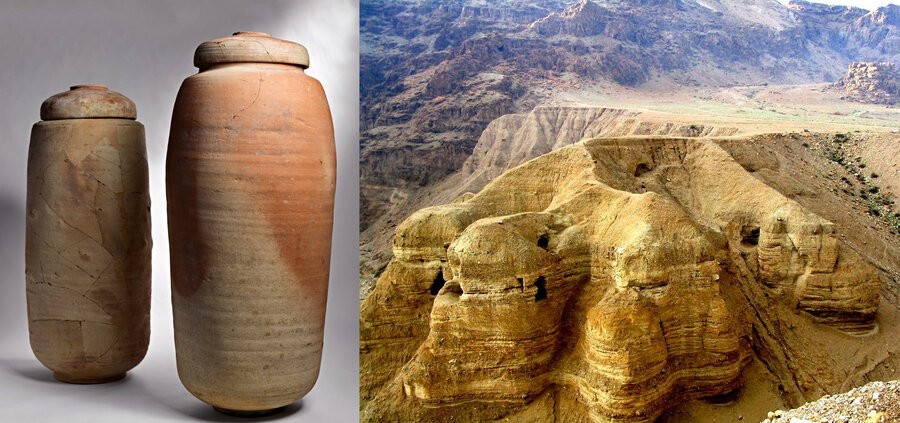
3
apocalíptica y el Pesher Habakuk, entre otros, fueron redactados en lo que el erudito John Meier llama un "Hebreo post-bíblico". Aunque el Obispo John Meier defendió en su libro “Un Judío Marginal” la tesis de que Jesús sólo hablaba arameo y llamó Palestina a Judea, se ha demostrado que el hebreo si estaba en uso en el siglo primero D.C.
Las cuevas de Qumrán en el Mar Muerto
Manuscritos del Mar Muerto. Himno en hebreo dedicado a Jerusalén El Libro de Ben Sira se escribió en hebreo entre el 190 y el 180 antes de Cristo en la época de la sofocante ocupación de Judea por los griegos.
Con este texto los maestros y ancianos judíos enseñaban la sabiduría mosaíca y las virtudes a los jóvenes. Fue traducido al griego por el nieto de Ben Sira quien dice en la introducción:”Pues no tienen la misma fuerza las cosas expresadas originalmente en hebreo que cuando se traducen a otra lengua”. Este libro es considerado un texto canónico en la Biblia cristiana (Eclesiástico).
Fragmentos del libro de Ben Sira en hebreo hallados en Masada, siglo I D.C.
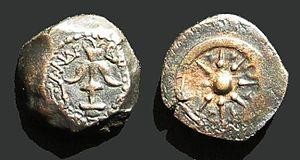
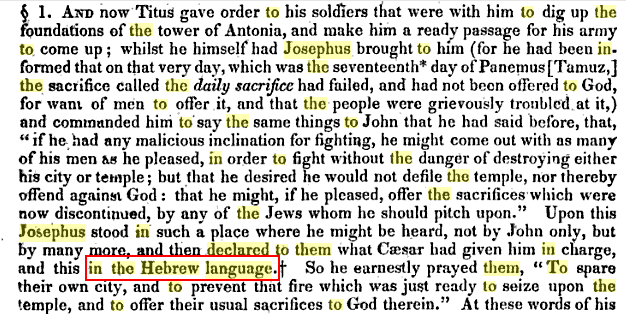
4
Durante el reinado de los reyes de la dinastía Jasmonea (141 al 63 A.C.) las monedas, salvo contadas excepciones, se acuñaron con inscripciones en griego y en hebreo.
Monedas del Rey Alejandro Janeo, 103 al 76 A.C.
El historiador judío Yosef Ben Matitiahu o Flavius Josefus en su libro
"La Guerra de los Judíos contra los romanos" (Tomo 6, cap. 2) relata cómo el General Tito lo envió a él a las murallas a negociar la rendición con el pueblo sitiado en Jerusalén en el año 70 D.C.. En algunas traducciones tendenciosas aparece que lo hizo en "la lengua de sus antepasados" que según eruditos de la iglesia es el arameo. Josefus escribió textualmente que él le habló al pueblo en hebreo y así aparece en la traducción al inglés de William Whiston en "The Genuine Works of Flavius Josephus" de 1824, así como en la traducción al hebreo del Dr.
Yaacob Naftalí Simjoni de 1923 y lo confirma el historiador inglés Desmond Seward en su libro "Jerusalem's Traitor", 2009. Josefus que escribió sus obras en Koiné hace una clara distinción entre el hebreo
“Ebraisti” y el arameo al que llama "Συριστί = Siristi o lengua siria".
Traducción de William Whiston, 1824:...“en la lengua Hebrea”
Los rebeldes judíos que defendieron la fortaleza de Masada fueron derrotados por las legiones romanas en el año 73 de la era cristiana.
Entre los hallazgos arqueológicos se encontraron fragmentos de cerámica con los nombres de algunos combatientes escritos en hebreo.
Entre los nombres aparece el nombre BEN YAIR del comandante judío ELEAZAR BEN YAIR mencionado por el historiador Flavius Josefus en su relato sobre la caída de Masada en su obra la Guerra de los Judíos contra los romanos.
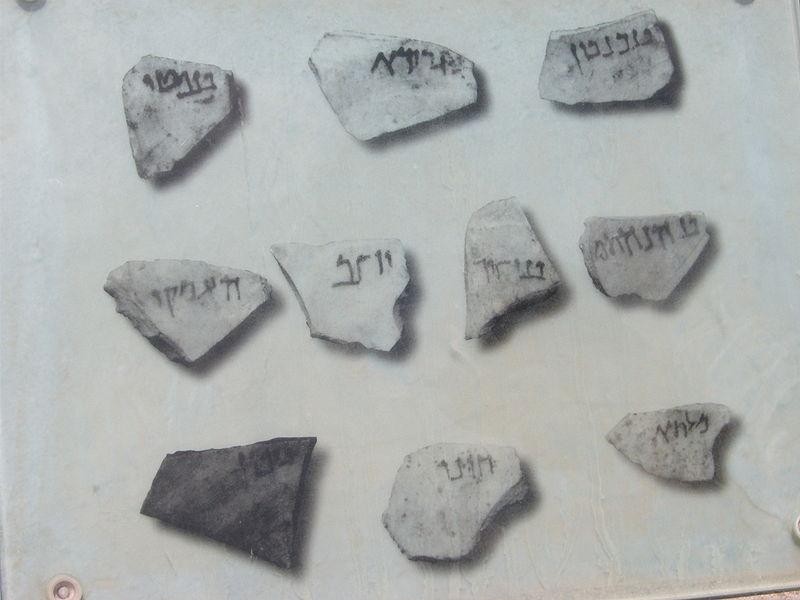


5
Ostraca de Masada, reporte arqueológico de 1989
Las cartas de Simón Bar Kojbá o Bar Kosiba (ver la traducción más abajo) halladas en 1960 en el Desierto de Judea y expuestas en el Museo arqueológico de Israel en Jerusalén fueron escritas en hebreo cotidiano durante la segunda revuelta de la Judea monoteísta contra la Roma pagana entre el 132 y el 135 de la era cristiana. Esas cartas demuestran que unos 100 años después de la Crucifixión de Jesús todavía se hablaba hebreo en Judea. Sin embargo, una generación después de esa aplastante derrota los judíos de la Galilea pasaron paulatinamente a hablar el arameo y el hebreo dejó de hablarse aproximadamente en el año 200 D.C..
Las Cartas de Bar Kojbá
Por cierto, fue en el año 135 D.C. cuando el emperador Adriano le cambió el nombre a Judea por el de Palestina y a Jerusalén por el de Aelia Capitolina. Es por eso que el nombre Palestina no aparece en los Evangelios.
Moneda romana del año 71 D.C. con la inscripción JUDEA CAPTA (no Palestina)
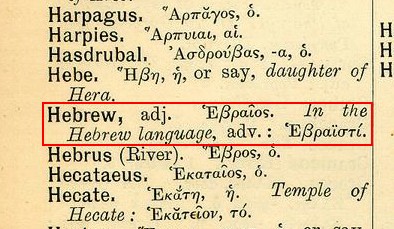
6
El Profesor David Flusser afirma en su libro “El judaísmo y las raíces del Cristianismo” que las Parábolas (en hebreo Mashal) de la literatura rabínica fueron relatadas al pueblo por los rabí-maestros solo en hebreo durante todas las épocas. Y las parábolas de Jesús no fueron la excepción. El Dr. Brad Young especialista en este tema coincide con el Profesor Flusser.
También menciona David Flusser como prueba del uso del hebreo entre los judíos el texto de Hechos de los Apóstoles 21, 37 al 40 donde textualmente dice que San Pablo (Saúl) arrestado por los romanos se dirige al pueblo en las escaleras de la fortaleza Antonia de Jerusalén “en lengua hebrea": "Pablo dijo: Yo soy un judío de Tarso…Te ruego que me permitas hablar al pueblo. El tribuno se lo permitió. Pablo de pié sobre las escaleras pidió con la mano silencio al pueblo. Y haciéndose un gran silencio les dirigió la palabra en lengua hebrea (en Koiné Ebraisti)...al oir que les hablaba en lengua hebrea guardaron profundo silencio", (Biblia de Jerusalén).
Y de nuevo en Hechos 26, 14 cuando Jesús se le aparece a Pablo (Saúl) en el camino a Damasco dice: "Caímos todos a tierra y yo oí una voz (Jesús) que me decía en lengua hebrea (Ebraisti): Saúl, Saúl, ¿por qué me persigues?. Te es duro dar coces contra el aguijón. Yo respondí:
¿quién eres Señor?. Y me dijo el Señor: Yo soy Jesús a quien tú persigues...". (Biblia de Jerusalén).
Algunos estudiosos de la vieja escuela afirman que el hebreo solo se hablaba entonces entre "sabios" (Jazal). Sin embargo vemos que tanto Pablo como Josefus le hablaron en hebreo al pueblo. Es preciso señalar que el Koiné era una modalidad del Griego de uso común en todo el imperio romano y fue la lengua en que se difundieron los Evangelios.
Arameo en Koiné se dice Συριστί συριστί (Siristi=en lengua siria) y en griego se dice Αραμαίοι y Αραμαικός. El texto original de los Hechos de los Apóstoles en Koiné dice Ebraisti: Ἑβραιστί = en lengua hebrea.
Ebraisti = en lengua hebrea. Diccionario inglés-griego de Woodhouse El investigador Douglas Hamp tiene un título de Master en Biblia de la Universidad Hebrea de Jerusalén y se ha especializado en lenguas antiguas como Hebreo bíblico y Griego Koiné. En su libro "Discovering the Language of Jesus" (2005) afirma que la evidencia de que el hebreo era una lengua hablada es inequívoca. Sin embargo se pregunta "por qué la mayoría de los eruditos y traductores de la Biblia consideran que el hebreo significa realmente arameo. La palabra para arameo en griego
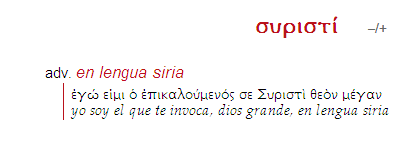
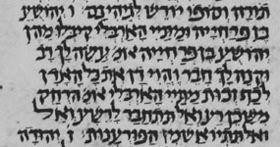
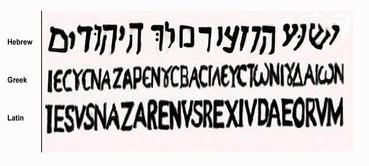
7
es Συριστί, Siristi, que por cierto nunca aparece en el Nuevo Testamento aunque si aparece en la Septuaguinta (la traducción al griego del Antiguo Testamento)". Douglas Hamp también se pregunta: "Dado que los copistas del Nuevo Testamento tenían una palabra para expresar
"arameo" si lo hubieran querido ¿por qué no lo hicieron si en verdad hebreo significa arameo?".
La Mishná es la recopilación hecha en la Galilea por Rabi Yehudá Hanasí alrededor del año 200 D.C. que resume los lineamientos de la ancestral sabiduría oral de los sabios (Tanaim) para la práctica correcta de los mandamientos de la Torá. Fue escrita en el hebreo hablado en Judea durante los siglos I y II D.C. conocido como "Hebreo Mishnaico". Józef Tadeusz Milik, catedrático bíblico polaco y ex-sacerdote católico que formó parte del equipo de especialistas que descifró los Manuscritos del Mar Muerto afirmó en su libro que el Hebreo Mishnaico era la lengua hablada por los habitantes de Judea a finales de la época del Segundo Templo ("Ten Years of Discovery in the Wilderness of Judaea", 1959).
La Mishná
En el Evangelio de San Juan (Biblia de Jerusalén) encontramos una clara referencia sobre los idiomas en uso en Judea al referirse al letrero colocado por Pilatos sobre la Cruz (INRI): En Juan 19, 19 dice: "Y Pilato escribió un letrero y lo puso encima de la cruz, en él estaba escrito: Jesús el Nazareno rey de los judíos. Leyeron el letrero muchos judíos porque estaba cerca el lugar donde crucificaron a Jesús, y estaba escrito en hebreo, latín y griego".
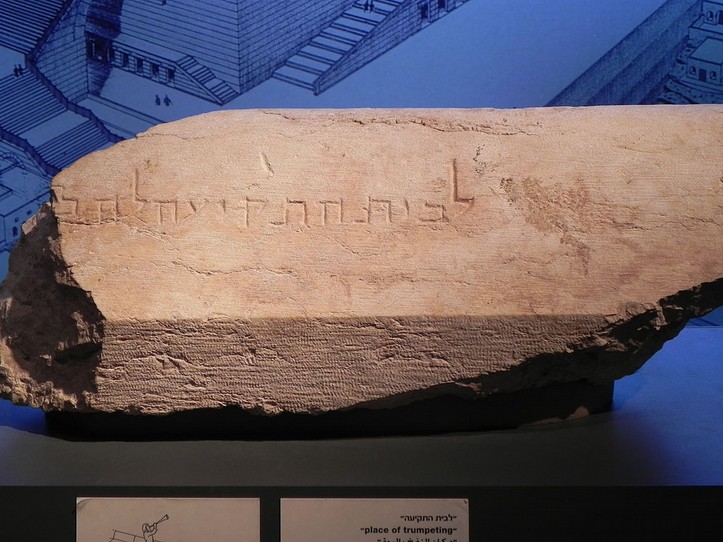
8
Letrero con inscripción en hebreo A LA CASA DE LAS TROMPETAS
hallado en las ruinas del Templo de Jerusalén, siglo I D.C.
El Arameo es una lengua semita ancestral como lo son el Canaaneo y el Ugarito. Se hablaba y se utilizaba como idioma oficial de las cortes reales en Asiria, Babilonia, Persia, Siria y Judea. Todas las lenguas semitas recibieron influencias unas de otras. El arameo se habló en Judea durante la ocupación Persa desde el siglo VI A.C.. Lo mismo ocurrió desde el siglo IV A.C. con el griego cuando Judea estuvo bajo el dominio de los reyes tolomeos y seleúcidas de Egipto y Siria respectivamente. Para entonces el hebreo reaparece como lengua hablada en Judea sobre todo durante el renacimiento nacional judío incentivado por los reyes Jasmoneos (Macabeos) en los siglos II y I antes de Cristo. Hablar hebreo, la lengua nativa, fue una de las maneras de reafirmar la identidad nacional en Judea para contrarrestar la apabullante influencia de la cultura griega. Una lengua extranjera como el arameo que recordaba el nefasto exilio de Babilonia no podía cumplir con ese objetivo étnico. Fué desde entonces y hasta el siglo I D.C. que se usó el Libro de Ben Sira en hebreo para enseñarle sabiduría y virtudes a los jóvenes. Lo que quiere decir que los jóvenes en Judea hablaban el hebreo.
Tanto el arameo como el griego-koiné fueron utilizados en el siglo I de la era cristiana para comunicarse con los judíos que no vivían en Judea y con los gentiles extranjeros mientras buena parte de los nativos hablaba el hebreo.
Seguramente Jesús que creció en la Galilea de los Gentiles en la frontera con el Líbano y Siria (Aram) hablaba también el arameo. Fue así cómo pudo hablar con el Endemoniado Gadareno en el pasaje de la manada de cerdos en la ribera oriental del Lago de Galilea (Aram/tierra de paganos). Pero para asombrar por su sabiduría a los maestros en el Templo a los 12 años, predicar al pueblo en Parábolas (Mashal), discutir con los fariseos, leer y enseñar en las sinagogas y en las escaleras del Templo o hablarle a la Samaritana en el Pozo de Jacobo usaba el hebreo tal y como lo hizo San Pablo poco después en las escaleras de la Fortaleza Antonia. Esta es también la opinión del Profesor Shmuel Safrai catedrático de la Universidad Hebrea de Jerusalén. Es de suponer que Jesús hablaba el hebreo con "el acento" gutural tan peculiar de los galileos al que se hace referencia en Mateo, 26, 73 y que delata a Pedro al hablar cuando niega a Jesús antes de que cante el gallo. Los judíos del Yémen mantuvieron después ese acento durante siglos.
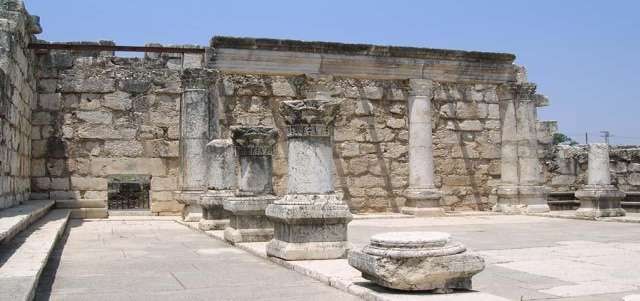
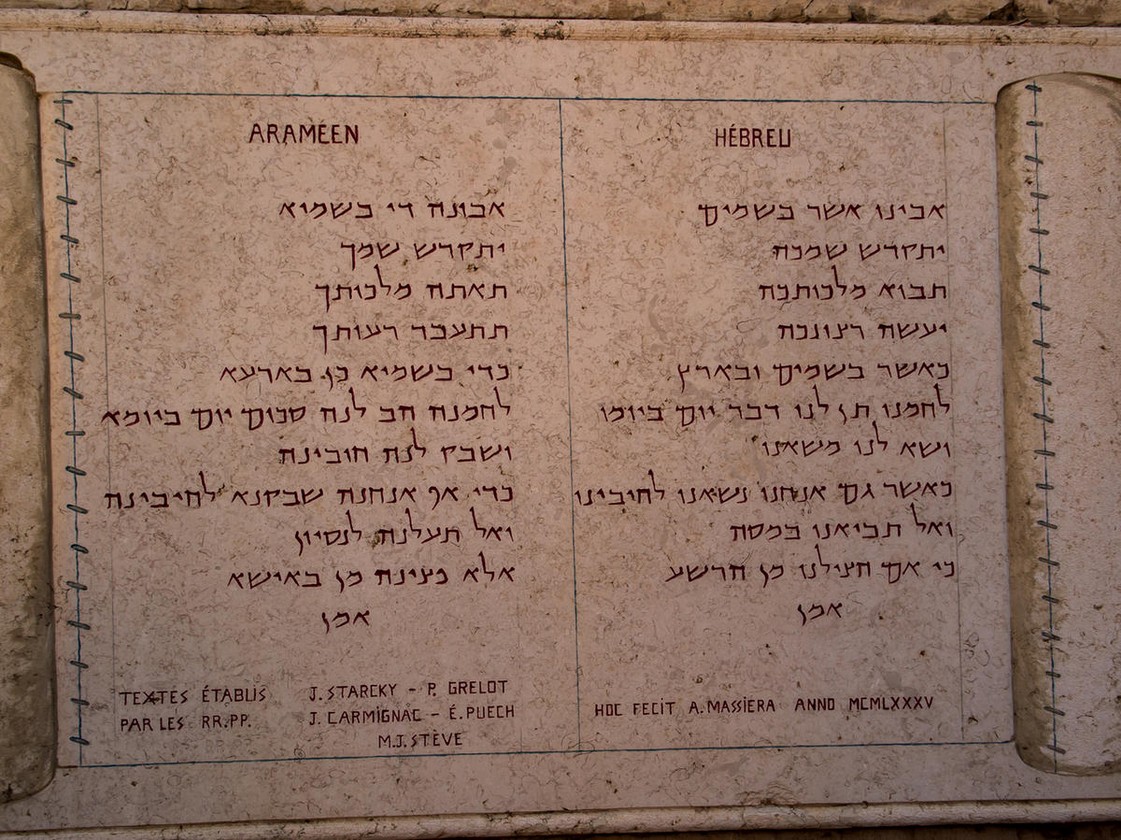
9
Ruinas de la Sinagoga de la aldea de Cafarnaún donde vivió Jesús Jesús “subía” (en hebreo Aliá) con frecuencia al Templo desde que era niño (Lucas 2, 41) por lo que estaba familiarizado con esos encuentros en Jerusalén de multitudes de judíos que peregrinaban con júbilo no solo desde las aldeas y ciudades de Judea y Galilea, sino que también venían de Perea, Capadocia, Silicia, Siria, Cirenaica, Babilonia y Egipto para cumplir con el mandamiento de Deuteronomio 16, 16. Durante esos días de fiestas religiosas los judíos hablaban entre sí en arameo, griego o hebreo de acuerdo a su ocupación y lugar de procedencia. Para hablar con Pilatos Jesús pudo hacerlo en koiné (griego del vulgo) que pudo haber aprendido en su infancia con la comunidad judía de Alejandría cuando la Huída a Egipto o en la aldea de población mixta de Séforis cercana a Nazaret. Aunque es más factible que lo haya hecho a través de un traductor al hebreo al servicio del Prefecto romano para comunicarse con la población nativa.
El Padre Nuestro en Arameo y en Hebreo. Iglesia Pater Noster, Jerusalén El español tiene anglicismos y galicismos sin que por éllo deje de ser una lengua singular. Lo mismo ocurre con el hebreo. Obviamente el
10
hebreo hablado en la época de Jesús tenía influencias del arameo y del griego en forma de palabras y expresiones. Palabras como "Aba"
(papá), "Ima" (mamá), "Bar Mitzva", "Agab", "Agada", "Barnash", "Bar -
Bish Mazal", Adraba, Katin, Kushia, los nombres de los meses…y muchas otras, provienen del arameo. Por lo que no es extraño encontrar arameismos en el hebreo. Lo mismo ocurrió con el griego. Palabras como "Sanedrín" (Consejo de Ancianos), Traklin, Diukan, Hediot, Katedra, Heguemon, Namal y hasta nombres propios (Horcano, Aristóbulo, Agripas, Tolomeo) eran utilizados en el hebreo cotidiano durante esa época (300 A.C. al 200 D.C.).
Fue en el período de transición linguística del hebreo al arameo en la Palestina romana del siglo II que el sirio Taciano compuso el
"Diatéssaron" (años 165-170 D.C.) que fué un evangelio que integraba a los demás en una versión única y sin contradicciones. Este evangelio sirio estuvo en uso en la Iglesia de lengua aramea que obviamente favoreció a posteriori al arameo como la lengua hablada por Jesús. Por otra parte, las versiones griegas más antiguas del Nuevo Testamento son el Códex Sinaíticus y el Códex Vaticanus del siglo IV que fueron objeto de ciertas modificaciones por los copistas. Ya habían pasado casi 300 años desde que se escribieron los Evangelios. Esto explicaría la evidente contradicción que aparece en el texto de los evangelios escritos originalmente en el siglo primero donde se menciona claramente una palabra como hebrea y los copistas del siglo II al IV la transcribieron fonéticamente en arameo (Akeldama, Rabuni, Gábata, Mammón, Sikera, Cefás, Talita Qumi, Ef’fata, Elí Elí Lama sabajtani, Raca, Getsemani, Gólgota…) amparados en que los judíos de su época ya no hablaban el hebreo sino el Arameo. Tal es el caso de Juan 19, 17:
"...y cargando él mismo con la cruz salió al sitio llamado de la Calavera que en hebreo se dice Gólgota". Y también en Juan 19, 13: "Pilato entonces al oir estas palabras sacó afuera a Jesús y se sentó en el tribunal, en el sitio que llaman el Enlosado que en hebreo se dice
Gábata".
El Profesor David Flusser explica: “Hay enseñanzas y expresiones de Jesús que pueden ser traducidas tanto al hebreo como al arameo, pero hay algunas que sólo pueden ser traducidas al hebreo. Ninguna puede ser traducida sólo al arameo. Además se puede demostrar el orígen hebreo de los Evangelios traduciéndolos al hebreo”, sobre todo el de San Mateo que fue escrito originalmente en hebreo segun ocho de los primeros Padres de la Iglesia del siglo II al IV D.C. (Entre ellos Papías de Hierápolis, Hegésipo, Irineus, Cirilo de Jerusalén, Epifanio, Orígenes y Gerónimo). Eusebio de Cesarea en su Historia Eclesiástica, VI, XXV, 3-6, cita a Orígenes a principios del siglo III D.C. quien afirmó que “el primero que se escribió fue el Evangelio de Mateo...que lo compuso en lengua hebrea y lo publicó para los fieles procedentes del judaísmo”.
Papías segun la misma fuente aseveraba que: “Mateo registró las
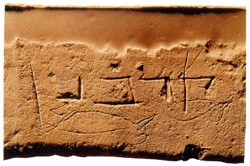
11
palabras de Jesús en la lengua hebrea...”. Lo mismo afirma el investigador Jean Carignac basándose en las mismas fuentes en
"Estudios de los antecedentes hebreos de los Evangelios sinópticos", Anual del Instituto Teológico Sueco 7 (1968-69), pag. 88.
Durante siglos la Iglesia excluyó al hebreo como lengua de uso cotidiano en la Judea del siglo I y desarrolló su propia teoría sobre el uso exclusivo del arameo en su afán por alejar a Jesús de su entorno cultural y religioso. Y es que la palabra "hebreo” se asocia inmediatamente con "judío". Por ejemplo, en la Biblia de Jerusalén, la iglesia católica añade una nota al texto de Marcos 7, 11 explicando que la palabra hebrea "Korbán" utilizada por Jesús y que aparece varias veces en la Torá-Pentateuco, es "una palabra aramea que significa ofrenda".
Inscripción con la palabra Korbán en hebreo del Siglo I D.C.
Algunos eruditos católicos han llamado a la lengua que se hablaba entonces en Judea: "arameo occidental hablado" a pesar que en Hechos de los Apóstoles 6 de la Biblia oficial de la Conferencia Episcopal Española dice textualmente sobre los judeo-cristianos de la iglesia de Jerusalén: "En aquellos días al crecer el número de los discípulos los de lengua griega se quejaron contra los de lengua hebrea porque en el servicio diario no se atendía a sus viudas". Hechos de los Apóstoles 6 dice Ἑβραιστί = en lengua hebrea. Y no Συριστί = Siristi, que en Koiné es lengua siria o arameo. Son los estudiosos de esa vieja escuela los mísmos que llaman a la Judea del siglo I con el nombre de
"Palestina" aunque este nombre se lo dió Adriano y es del siglo II D.C. y por eso no aparece en los Evangelios. Llegan incluso al extremo de ignorar la evidencia arqueológica (manuscritos e inscripciones) hallada en las últimas décadas en el Desierto de Judea y en las ruinas del Templo. Pero no todos ignoran esas evidencias. En la 1ra. edición de 1958 del Oxford Dictionary of the Christian Church (Diccionario Oxford de la Iglesia Cristiana) decía en forma tajante que "el hebreo se dejó de hablar en el siglo IV antes de Cristo". A raíz de los hallazgos arqueológicos corrigieron el texto y en la 3ra. edición de 1997 de dicho diccionario se afirma que "el hebreo continuó siendo usado como lengua hablada y escrita después del período clásico y se encuentra en los textos de Qumrán y de la Mishná".
La película "La Pasión" de Mel Guibson hablada en arameo es un claro ejemplo del empecinamiento de ciertos sectores reaccionarios cristianos por desconocer hasta el día de hoy el entorno cultural hebreo del Nazareno.
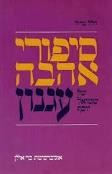
12
Los investigadores David Biven y Roy Blizzard demuestran en su estudio "Understanding the Difficult Words of Jesus", 1995, pag. 53, que
"el trasfondo Hebreo (en los Evangelios) no solo se revela en la estructura de las oraciones sino que también en muchos literalismos y expresiones idiomáticas presentes que son peculiares de la lengua hebrea" . "Los Evangelios están plagados de confusiones debido a que los traductores por lo general no reconocieron el pensamiento en hebreo, las expresiones idiomáticas y la estructura de las oraciones que estan detrás de los textos Griegos", explican Biven y Blizzard. ..."Si la Iglesia se hubiera provisto de una comprensión correcta del hebreo en las palabras de Jesús, la mayor parte de las controversias teológicas nunca se hubiesen suscitado desde el comienzo”, afirman Biven y Blizzard ( pag. 67).
El hebreo que antes se hablaba en Judea se convirtió con los siglos en lengua sacra utilizada solo para orar en las sinagogas de la "Diáspora"
así como para estudiar la Torá. Los judíos dispersos por el planeta adoptaron las lenguas de las tierras donde habitan. Casi dos mil años después de la Destrucción del Templo de Jerusalén en el año 70 de la era cristiana, los judíos que retornan a Sión-Israel, eligen espontáneamente el hebreo como su lengua nacional. Pudieron haber elegido el arameo pero más pudo el llamado de la "lengua madre".
Es un hebreo que tuvo que ser actualizado y al que se le agregaron nuevos vocablos pero que se basa en el hebreo que hablaba Bar Kojbá en el año 132 D.C.. Hoy día los judíos israelíes leen la prensa, estudian, conversan y escriben en la lengua de sus antepasados enriquecida por el uso cotidiano.
Los hebreos vuelven a hablar el hebreo en la Tierra de Israel.
Libro escrito en hebreo israelí moderno por
Shai Agnón, Premio Nóbel de Literatura 1966
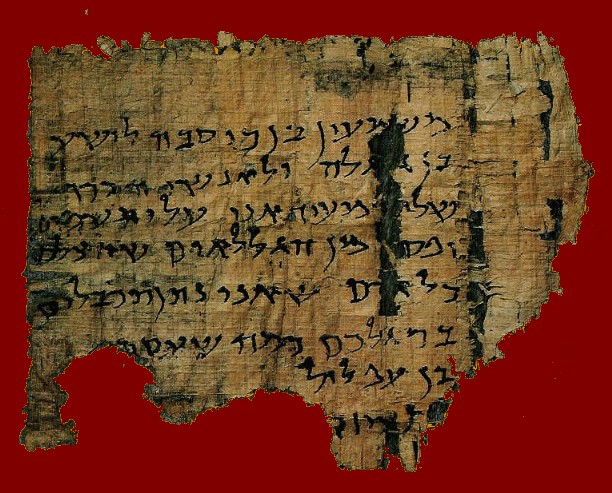
13
Lecturas recomendadas:
+ Alfabeto Hebreo
+”Which Language Did Jesus Speak - Aramaic or Hebrew"?. Por Brian Knowles.
+ U
nderstanding the Difficult Words of Jesus por David Biven and Roy Blizzard
+ El idioma hebreo - Wikipedia.
+ El hebreo de Mateo
Una de las cartas de Bar Kojbá expuestas en el Museo de Israel en Jerusalén
Imágen:
Israel
Museum,
Jerusalem
AHRC ID#:
24
Fecha de escritura: 135 Era Cristiana
Lugar del hallazgo: Wadi Murabb'at, cerca del Mar Muerto, Israel Localización actual: Museo de Israel, Jerusalén, Israel
Idioma:
Hebreo
Material:
Papiro
Traducción:
De Simón Ben Kosiba a Yeshua Ben Galgula y a los
hombres del fuerte, paz. Pongo al cielo como
testigo contra mi que a menos que destruyan a los
Galileos que están entre ustedes, cada hombre,
colocaré grilletes en tus pies, como hice con Ben
Aflul.
Comentarios:
Esta carta escrita en el siglo II D.C. demuestra que
14
el idioma hebreo era todavía de uso común para
esta época. Shimeon Ben Kosiba (Simón Bar Kojbá)
fue el líder de la Segunda Revuelta de los judíos del
132-135 D.C. En esta carta aparece el modismo
coloquial "tashmiym" (última palabra, tercera línea) en vez de "et hashamayim".




























